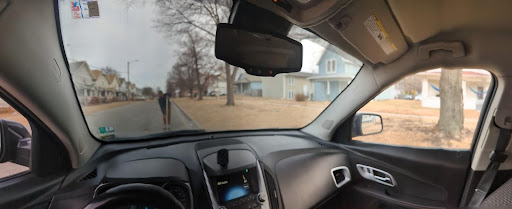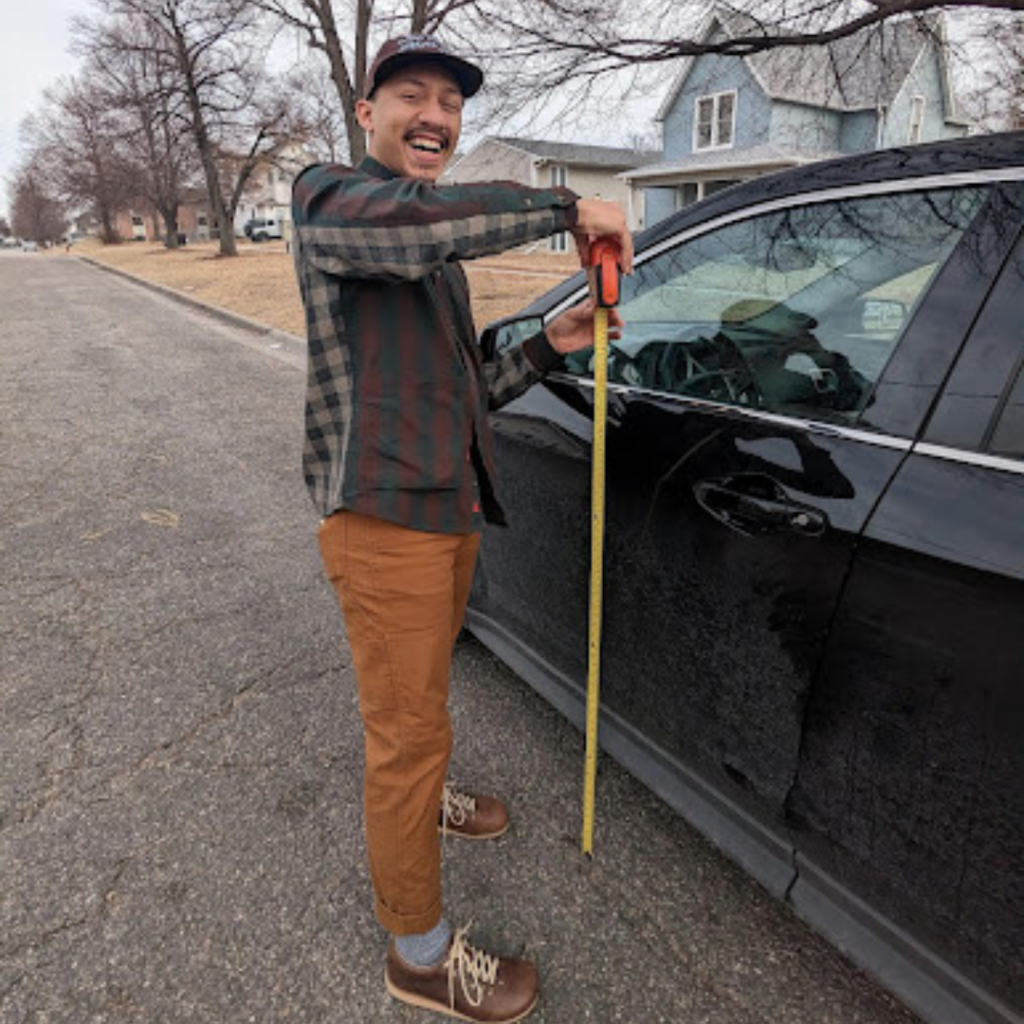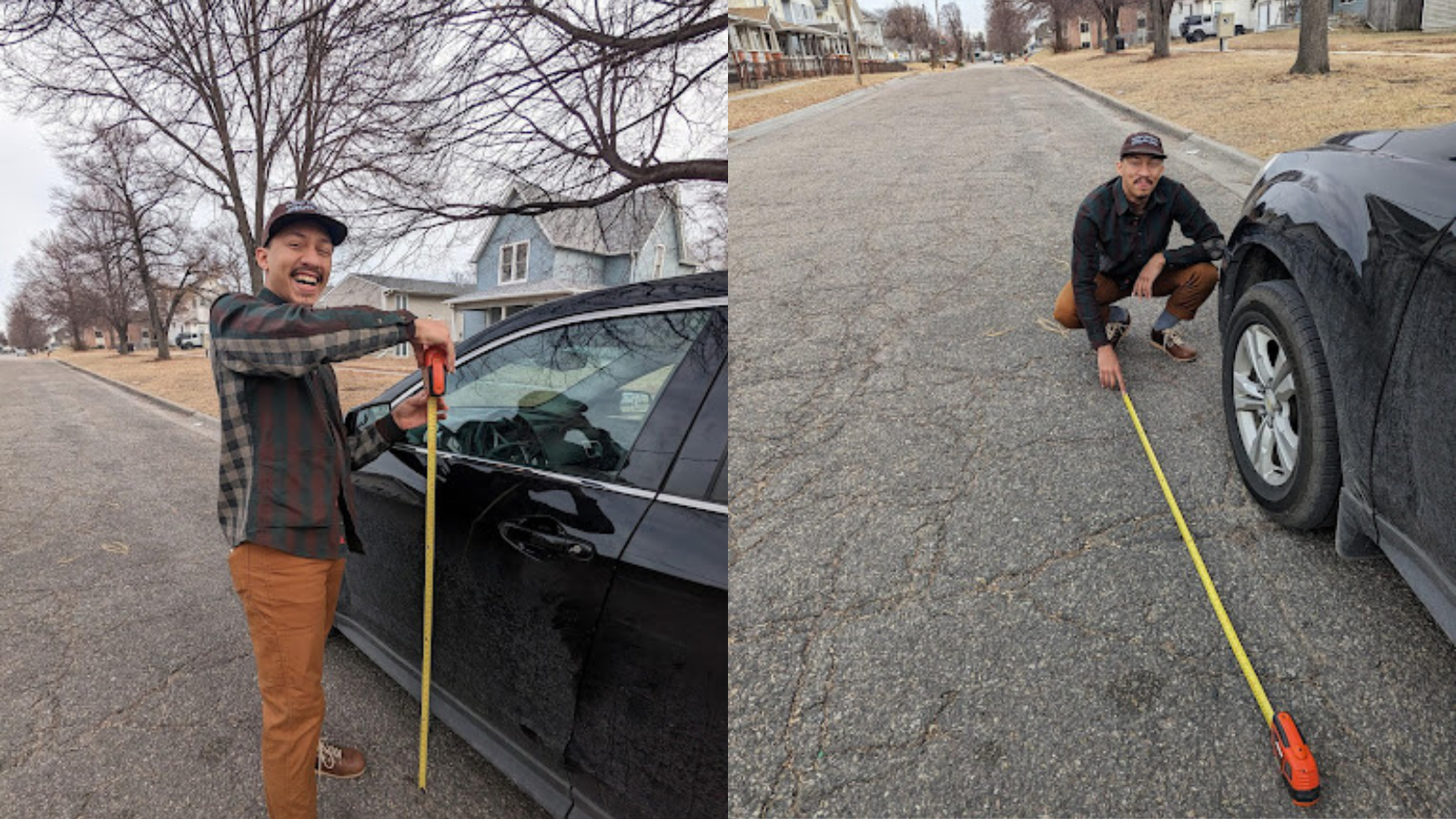DISCOVER YOUR LOCAL BICYCLING COMMUNITY
Find local advocacy groups, bike shops, instructors, clubs, classes and more!
Help Us Educate Drivers About Blind Zones
All drivers should know about blind spots, the areas to the sides of our vehicles that we can’t see through our rear-view or side mirrors. Newer model year cars often have indicator lights warning drivers about objects in these side blind spots. But there’s another big blind spot on many cars: hoods of vehicles can obscure a massive area directly in front of the car or truck. This is called a front blind zone. Front blind zones are less of an issue for sedans and smaller cars, but as the size and weight of American cars and trucks continue to get taller and heavier, the danger to the safety of people biking, walking and rolling grows with the blind zone.
Large-scale cars, trucks, and SUVs, like the Ford F-150 and the Cadillac Escalade, put their drivers in a position away from the front of the vehicle and lifted into the air, meaning that drivers cannot see the ground for ten to twenty feet directly in front of them. This means they cannot see small children, like preschoolers, who might cross in front of their car. In fact, the image of the Ford F-150 shown below demonstrates that its front blind zone extends the length of over a dozen preschoolers. This epitomizes the most significant danger of blind zones, and why the League is asking you to help educate decision-makers and the public about the danger of increasing vehicle size.

Help Us Educate Drivers About Blind Zones!
The U.S. Department of Transportation’s Volpe Center has been developing a crowd-sourced web app in partnership with the Olin College of Engineering that enables people to submit data identifying and measuring a vehicle’s blind spots. This tool, called VIEW, will enable drivers, fleet managers, and future car buyers to have a sense of a particular vehicle’s blind zone danger and compare it to other vehicles to make more informed purchases. You can submit data for your own vehicle here and help expand the dataset available.
How To Submit Or View Blind Zone Data
On the site, you can either add a vehicle to the database or use the visualizer to see existing blind zone data. If you go to the visualizer and click on “details” on the side of one of the vehicles, like I did here, you’ll see a drop-down that enables you to visualize how far a front blind zone extends out based on the different types of vulnerable road users.
To submit data for your vehicle, you will need a yardstick, a tape measure, your phone, and ten to twenty minutes. In this example video, engineers demonstrate the measuring process on a large garbage truck, but for your viewing pleasure, I went ahead and completed the process on my own 2013 Chevrolet Equinox. You can follow along with the full instructions provided by VIEW here.
I highly suggest finding a flat ungraded road to do these measurements!



Knowing that there is a blind zone in front of my vehicle leaves me with a little more caution about the way that I drive and interact with other road users, but it also means that I can do a better job at responding to situations as they arise. We strongly encourage you to take the time to measure out your car, take a panorama, and upload it to the VIEW app whenever you get the chance!